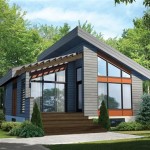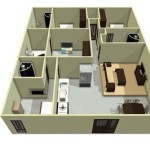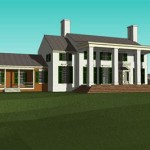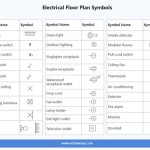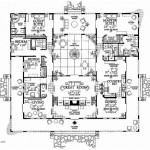Plan Your House: A Comprehensive Guide
Building or renovating a house is a significant undertaking, requiring meticulous planning to ensure a successful outcome. A well-defined plan saves time, money, and reduces stress by anticipating potential challenges and providing a clear roadmap for the entire project.
The planning process begins with defining the project scope. This involves outlining the objectives, whether it's a new construction, an extension, or a renovation. Clearly stating the goals, such as adding more space, improving functionality, or enhancing aesthetics, helps in focusing subsequent planning stages.
Budgeting is a crucial aspect of house planning. A realistic budget provides a framework for decision-making throughout the project. It involves estimating the costs of materials, labor, permits, and other expenses. Contingency funds should also be included to accommodate unforeseen costs that may arise during construction.
Site analysis is an essential step for new constructions and extensions. This involves evaluating the property's topography, soil conditions, drainage, and orientation. Understanding these factors informs decisions regarding the house's placement, foundation design, and landscaping.
Choosing the right architectural style is paramount for achieving the desired aesthetic and functional outcome. Researching different architectural styles, considering the local climate, and consulting with an architect can help in selecting a style that complements the surroundings and meets the homeowner's needs.
Designing the floor plan is a critical stage in house planning. The floor plan dictates the layout of rooms, their sizes, and how they connect. Considerations include traffic flow, natural light, privacy, and the specific needs of the occupants. Software tools can assist in creating and visualizing different floor plan options.
Selecting suitable materials is essential for ensuring the structural integrity, durability, and aesthetic appeal of the house. Factors to consider include cost, maintenance requirements, environmental impact, and local building codes. Consulting with building professionals can provide valuable insights into material selection.
Hiring qualified professionals is crucial for the successful execution of the house plan. Architects, engineers, contractors, and other specialists bring expertise in their respective fields, ensuring that the project adheres to building codes and quality standards. Thorough research and obtaining multiple bids are recommended when selecting professionals.
Obtaining necessary permits is a legal requirement before commencing construction or renovation. Building permits ensure that the project complies with local building codes and safety regulations. The permitting process can vary depending on the location and the scope of the project.
Establishing a realistic timeline is essential for managing the project effectively. The timeline should outline the key milestones, including site preparation, foundation construction, framing, roofing, interior finishes, and landscaping. Regular communication with contractors and suppliers helps in keeping the project on schedule.
Regular monitoring and inspections are crucial throughout the construction process. This involves verifying that the work is being performed according to the plans and specifications, and that building codes are being adhered to. Regular inspections help in identifying and addressing potential issues early on.
Landscaping plays a significant role in enhancing the curb appeal and functionality of the property. The landscaping plan should consider factors such as drainage, soil conditions, sun exposure, and the desired aesthetic. Sustainable landscaping practices, such as using drought-tolerant plants, can reduce water consumption and maintenance.
Interior design is the final stage in creating a comfortable and aesthetically pleasing living space. This involves selecting furniture, fixtures, finishes, and décor that reflect the homeowner's style and preferences. Considerations include color palettes, lighting, and the functionality of each room.
Energy efficiency should be a key consideration throughout the house planning process. Incorporating energy-efficient features, such as insulation, windows, and appliances, can reduce energy consumption and lower utility bills. Sustainable building practices contribute to a more environmentally friendly home.
Accessibility features should be considered, especially for individuals with mobility challenges. This may include wider doorways, ramps, grab bars, and adaptable fixtures. Incorporating accessibility features enhances the usability and safety of the home for all occupants.
Smart home technology is becoming increasingly popular in modern homes. Integrating smart home features, such as automated lighting, security systems, and climate control, can enhance convenience, security, and energy efficiency. Careful planning is required to ensure seamless integration of these technologies.
Documentation is essential throughout the house planning and construction process. Keeping records of plans, permits, contracts, invoices, and warranties provides a valuable resource for future reference and can be helpful in resolving any disputes that may arise.

House Plans How To Design Your Home Plan

House Plans How To Design Your Home Plan

Design Your Own Home House Designing Homes

From Sketch To Reality How Design A House You Ll Love

Tips For Selecting The Right Floor Plan Your Home Sater Design Collection

Home Design Your House

Free House Design Home And Plans

Floor Plans Learn How To Design And Plan

House Plans How To Design Your Home Plan

Why Is A Floor Plan Important In Building House Ch


